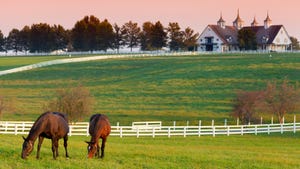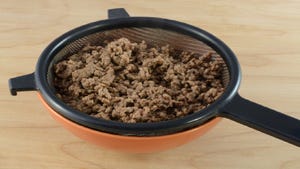
With proper management, anything is possible. Tweaking your management of homegrown forages can help you meet the protein and energy needs of your cattle herd, without adding extra costs to your bottom line. That's what University of Nebraska Extension educator, Dennis Bauer of Ainsworth, told a group of producers at a Beef Profit Tips meeting in Center recently.
"Putting up high quality forages at no extra cost saves you money" because you may be able to meet the protein and energy requirements of your herd without purchasing additional supplements, Bauer said. But, timing is everything.
"There are times when we can feed some pretty low quality feedstuffs like cornstalks," he said.

Proper Timing Pushes Up Crude Protein On Forages
At other times of the year, when the herd needs higher quality feed, moving up the cutting date on forage crops can make a big difference at improving the quality of the forages harvested and eventually fed to the herd.
Cool-season forages are often harvested too late, said Bauer. UNL studies show that quality dips dramatically in a three-week period during the growing season. "If we cut earlier, we won't be harvesting as much, but we will have more after-growth," he said. "Most people put up hay by the end of June and early July when the protein levels are at six to seven percent," Bauer explained. "If they would harvest two weeks earlier, the protein would be around 10% to 14%."
Weather is a factor in harvesting good quality hay for many producers. "The first part of July is usually good haying weather, but it is not good timing for quality," he said. "Late cut hay, harvested in September, also provides good quality regrowth hay when there is a spike in crude protein."
The highest quality is usually in May, with a downward trend in crude protein into early July when protein levels are relatively flat, until they spike again in early September.
On studies of eight cool-season grasses, crude protein levels were at 12.4% when heads were half emerged. Brome grass was actually higher than that at the same stage, with 16.5% protein. By the time one quarter of the heads were in full bloom, protein dropped to 8.6% on the eight grasses and to 10.2% on brome. When seeds were at dough stage, about the time many producers begin harvest, protein levels had dropped to the six to seven percent range.
"Warm season grasses are usually not as high in quality as cool season grasses," Bauer said. "In the drought year of 2012, if you had enough forages, we actually saw better cattle performance than in 2013 when there was fast growth, but the quality was so poor."
You can learn more about ways to balance protein and energy levels for the herd by contacting Bauer by emailing him at [email protected], or call 402-387-2213.
About the Author(s)
You May Also Like






